The History Of Volvo V40

The Volvo S40, V40 and V50 are compact executive cars produced by Volvo Cars. There have been two generations, the first launched in 1995 and the second one in 2004. The latter is listed by Forbes as one of the best luxury cars for young affluent drivers. It is also the most popular car among women in the luxury segment in the US market according to J.D. Power and Associates.
In the summer of 1995 Volvo released the S40 saloon (sedan) and V40 estate (station wagon). They were built in the Netherlands at the NedCar factory, a pre-Ford joint venture between Volvo and Mitsubishi Motors. It was based on a common platform with the Mitsubishi Carisma, but the Japanese version did not sell as well in Europe.
In 2001 the 40 Series went through a facelift ("Phase II"), and a number of technical improvements were simultaneously introduced, such as improved engine management, direct (diesel) fuel injection, extra safety features, larger brake discs, new front suspension and steering, revised rear suspension, larger tires and a slight widening of the track width.
The 40 Series cars were equipped with four-cylinder engines, such as a 1.9 L diesel or 1.6, 1.8,1.9T , or 2.0-litre fuel-injected gasoline engines, with low (2.0T) and high (T4) pressure turbo variants at the top of the motor range. The 1.9-litre was the only engine available in North America.
In the UK trim levels were base, SE and CD.
The Volvo S40 was the first car to earn four stars in Euro-NCAP.
For the station wagon version, see Volvo V50Introduced in the middle of the 2004 model year, the second generation S40 (known as the 2004.5 Volvo S40) introduced a new design based on the Volvo P1 platform built at the Volvo Cars factory in Ghent, Belgium. At the same time, the V40 was replaced by the V50 estate, also based on the P1 platform and built in Ghent. The S40 was nominated for the World Car of the Year award for 2005 and won the Canadian Car of the Year Best New Sport Compact award for 2005. It has also been elected the South African Car of the Year for 2005 by the South African Guild of Motoring Journalists.
The chassis for this car and the majority of its components were developed by Volvo, however similar mechanical components can be found in the Mazda3 and the European Ford Focus. The engine, a 2.5L 5 cylinder (B5254T3, and B5254S respectively for the turbo and naturally aspirated models) is the latest generation of Volvo's 5 cylinder engines. These inline fives have been continually developed by Volvo since the debut of the engine in the 850, in 1993. The top of the line S40 T5 AWD, as well as the 2.4 and 2.4i, powertrain is still made by Volvo. The transmission is developed with Getrag at Volvo's Koping Transmission Center in Sweden, and the AWD system bought from Haldex Traction of Sweden.
The S40 T5 (one of the several variants of the S40) features a 2.5L (2521cc) five-cylinder fuel injected engine with a light-pressure turbocharger. The valvetrain has four valves per cylinder and is a DOHC design. The engine is transversely mounted at the front of the vehicle and drives the front wheels, as was with the first generation.
Marketing
Main article: The Mystery of DalaröIn early 2004, Volvo started an ad campaign called The Mystery of Dalarö in which 32 residents of the same Swedish town bought the same car on the same day from the same dealer. The advert was produced in a documentary style by director Spike Jonze.
2008 facelift
The S40 was refreshed for 2008, offering refined sportiness and increased premium feel. Further improvements include improved audio systems, increased storage space and new safety features like Emergency Brake Lights which flash rapidly during hard braking to alert traffic behind the car. The new S40 also comes with optional Active Bi-Xenon headlights which point the light beam in the direction of the road as it curves (standard in SE Lux models). There is also a camera which can be located on the side mirrors which alerts the drivers of passing vehicles beside the car. The camera is optional on all models. This is given the name BLIS (Blind Spot Information System).
Volvo will release the 2.0 litre diesel Geartronic on the third week of February except in Ireland where it will be released in the last week of May (due to delivery intervals). However the 2.0d in Geartronic is usually only a special order in Europe, it seems, as there is no specifications for 2.0d engines that are Geartronic/ Automatic in the manual or catalogues.
The T5 engine got a performance increase of 9hp (6.7kW), giving an output of 227hp (169kW). The D5 engine has become available with a manual gearbox offering 400N·m (300ft·lbf) of torque and an automatic transmission offering 350N·m (260ft·lbf) by the second half of 2007.
The next S40 will be based on the next-generation global Ford Focus C1 platform.
From Wikipedia, the free encyclopedia
More About Volvo V40
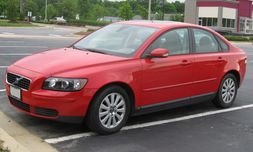
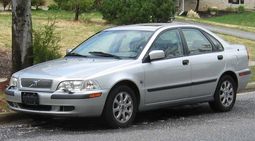
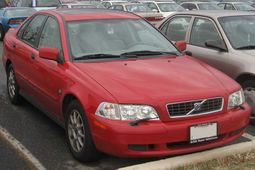
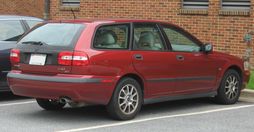
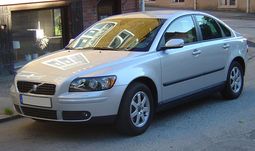
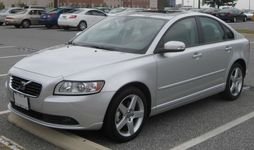
|